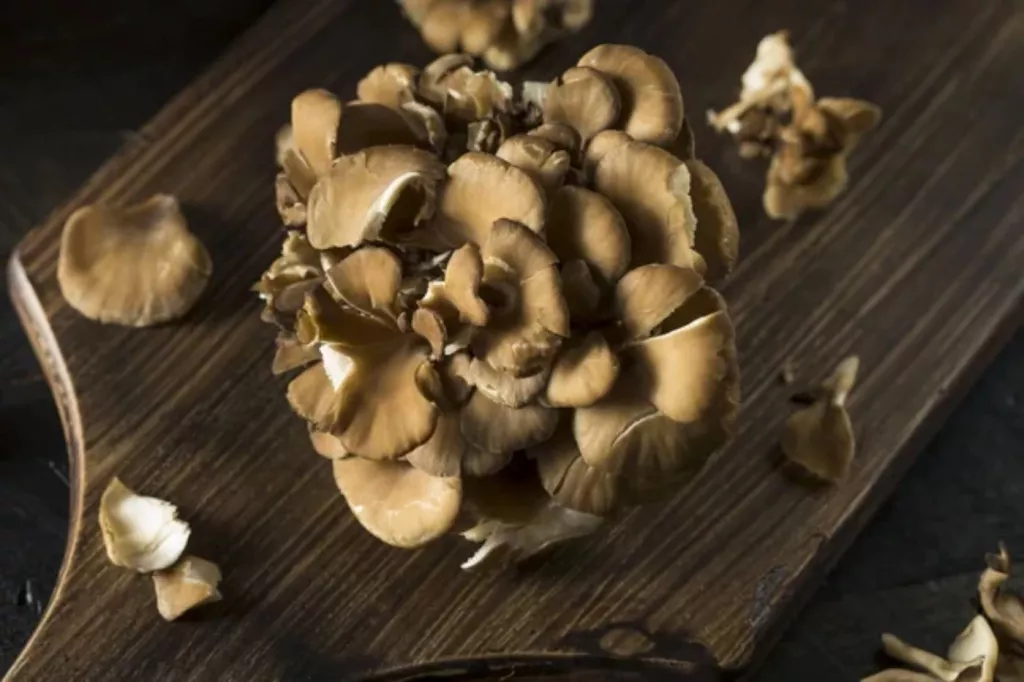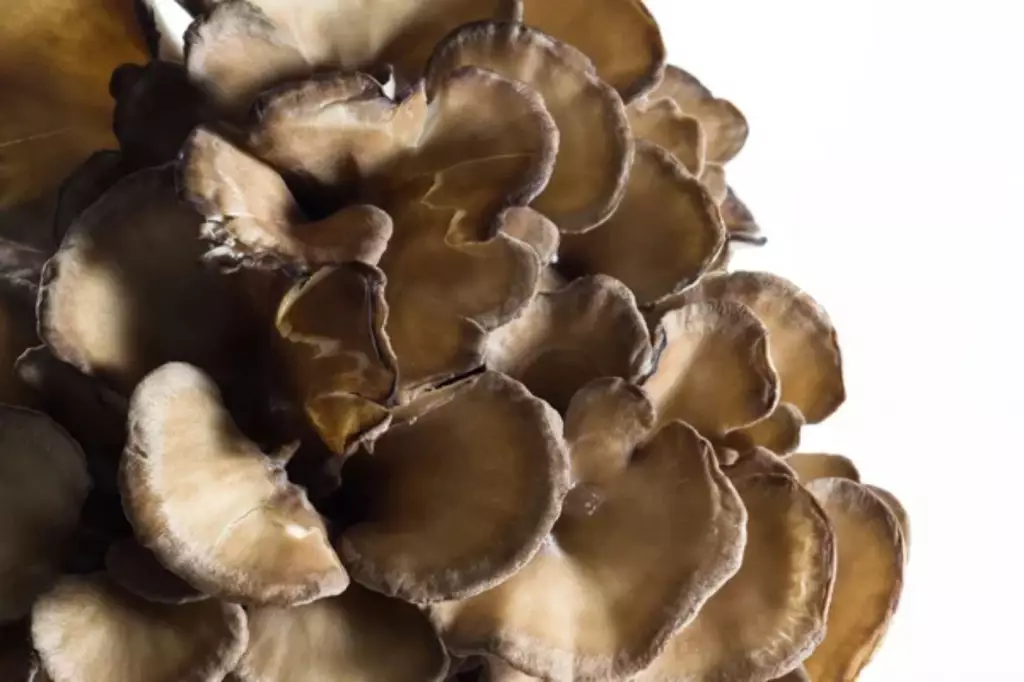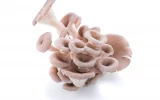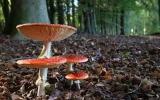How Fast Does Maitake Grow? - Complete Timeline
Maitake mushrooms, also called “hen of the woods," are one of the most valued mushrooms due to their versatility and health benefits. They are exceptionally flavorful and easy to grow both indoors and outdoors. But how fast does maitake grow? Let's find out.
When grown indoors, maitake mushrooms take about 3–4 months to become fully mature. When grown on logs, maitake will take a year or more to grow. Growing maitake on logs might be long but it is worth it as logs can fruit for 7 years or more.
Below, you'll find useful tips on how to grow maitake mushrooms, whether you want to grow them indoors or outdoors.
Summary
- Maitake mushrooms are slow growers compared to other types of mushrooms. If grown on logs, they take 1 year to fully develop, but if grown indoors, the process speeds up to 3–4 months.
- Maitake mushrooms are popular for their culinary versatility and health benefits.
- Maitake grown on logs may take a year or more to fully mature, but they can continually produce new flushes each year for 7 years.

On this page:
Maitake Mushrooms are Slow Growers
Growing maitake mushrooms is a good choice because of the many beneficial compounds that can be extracted from them. Aside from the fact that you can grow them with ease, they can also be grown either indoors (using sawdust spawn or growing kits) or outdoors (growing them from logs).
Maitake mushrooms are slow growers. If grown indoors, they take about 3-4 months to become fully mature. If grown on logs, it will take a year or more before the fruiting bodies appear. When grown on logs, after the first harvest, you will need to wait for 6 weeks or more to see regrowth.
The maitake mushroom (Grifola frondosa) is an exceptional mushroom that is being called many names, such as God's mushroom, Hen of the Wood, Ram's Head, and Sheep's Head. “Maitake” in Japanese means “dancing mushrooms,” and they are named as such in resemblance to the waving hands and kimono sleeves of dancing girls.
Maitake mushrooms are called “Hen of the Woods” in some regions because of their resemblance to a hen perched upon a nest. Maitake mushrooms in the wild are usually found growing at the base of dead trees and even on living trees such as oaks, chestnut trees, and elm trees.

Maitake mushrooms are valued in culinary but are regarded as well for their health benefits. The earthy and musky taste of maitake mushrooms, paired with their distinct aroma and unique succulent texture, make them popular all over the world.
These mushrooms have a lot of health benefits as well. They have high antioxidant content, high fiber content, vitamin B, and minerals such as copper, selenium, potassium, phosphorous, and zinc. The following are some of the health benefits you can gain from consuming maitake mushrooms:
-
Maitake has anti-aging and anti-tumor properties. They also have cholesterol-lowering compounds and can be used to manage blood sugar and aid in weight loss.
-
Maitake mushrooms can also boost the immune system as they stimulate the white blood cells and are a natural antibiotic.
-
Maitake mushrooms are good for the heart because they contain eritadenine - a compound that can help lower blood pressure.
-
Ongoing studies about Maitake mushrooms’ efficiency in combating HIV, Hepatitis C, and some cancers are also in the works, as these mushrooms are thought to contain D-fraction, a compound known to kill abnormally growing cells.
Growing Maitake Mushrooms on Logs Will Take One Long Year or More
The whole process of growing maitake mushrooms on logs takes about a year to grow into a fully mature cluster.
Growing maitake mushrooms on logs increase your chance of success in farming these mushrooms. Since maitake mushrooms in the wild usually grow on old hardwood trees, mimicking this setup as much as possible will do the work.
To grow maitake mushrooms on logs, here’s a basic step-by-step guide:
- Obtain an oak log or any deciduous or coniferous trees and make sure their size is at least 3 feet in length and 6 inches wide. Soak it in water for at least 6 hours.
- Drill 5/16-inch holes all along the log. Drill until about 1.5 inches deep and make sure it’s spacious enough to accommodate at least 30 holes.
- Use dowels to inoculate your logs. Insert the dowel through all the drilled holes by hammering it until it comes out on the other end.
- Once all dowels are in, seal the holes using wax or other non-toxic paraffin-based products. You can use a brush to paint over the holes to completely seal it shut. This process avoids competing fungi, bacteria, and insects from getting into your log.
- Let the log incubate in a damp area for 6 months or more and do the following:
- Keep the log elevated off the ground by placing a few bricks to reduce contamination.
- Water the logs every 2 weeks or as needed. Always keep them moist.
- Pinheads will start to form where you placed the dowels at the end of 6 months. This signals that the log can now be shocked to induce fruiting. To shock the logs, soak them in ice water for full 24 hours. This mimics springtime when you remove the logs from the ice water.
- Place the logs somewhere shady but let them have partial light exposure. When the maitake mushrooms start popping up, make sure they are exposed to natural light for at least 8-10 hours a day.

Growing Maitake Mushrooms Indoors Speeds Up Growth Within 3-4 Months
With this method of growing maitake mushrooms, you should have mature fruiting bodies within 3 to 4 months. Here are the materials you need to get started:
- Maitake spawn (sawdust spawn is recommended)
- Growing bags
- pH tester
- Potting Soil
- Substrate mixture with the following recipe: fine and coarse hardwood sawdust (75%) + Coarse wheat bran (23%) + Calcium compound either gypsum or lime (1%) + Sucrose (1%) = 100%
If you choose to grow maitake indoors to speed up the process of growing them and have more control over their development, here are the steps to grow maitake indoors:
- Prepare the substrate in a clean and sterile environment to avoid contamination. Ensure proper ratio when mixing the hardwood, wheat bran, and calcium compounds. The pH must precisely be between 5.5 and 6.5 to gain better results.
- Fill the growing bag with the substrate but don’t go all the way to fill the line
- Add the spawn and distribute it evenly. Maintain sterile conditions.
- Create a 1 to 2-inch casting over the substrate. The potting soil will support the growth of the mushrooms.
- Place the growing bag in a dark but well-ventilated room. During incubation, no light is needed. Light exposure will only be needed when the actual fruiting bodies are starting to form. Keep the temperature at 60 – 70°F inside the growing room and maintain a humidity of 60 - 65 %.
- When you start seeing pins form, you can induce fruiting by providing the following fruiting conditions for maitake mushrooms: cooler temperatures ranging from 55°F to 65°F and a humidity level of 85% to 90%.



